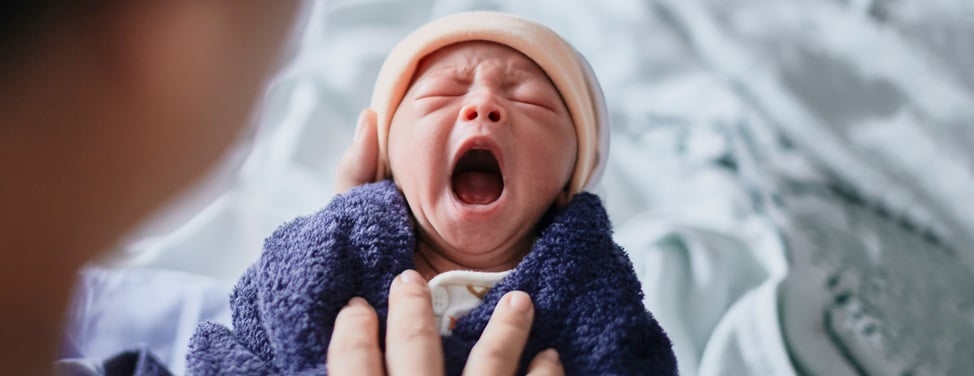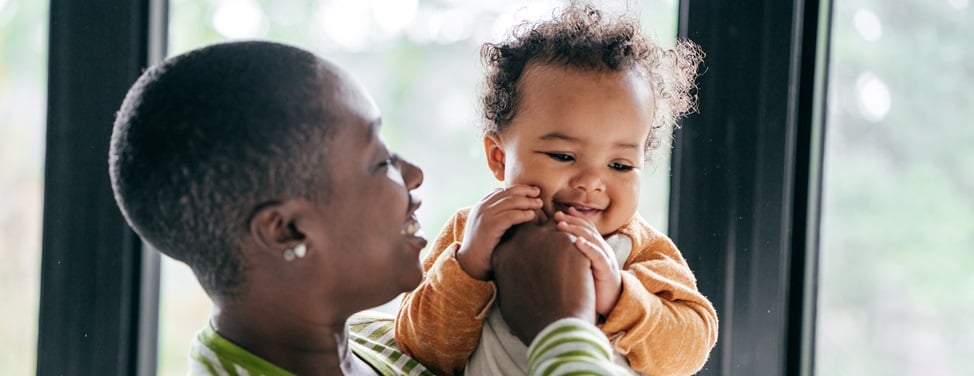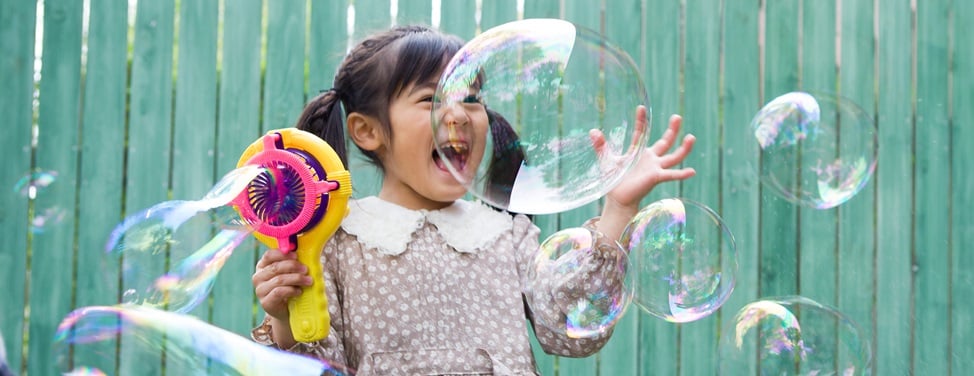Many parents have concerns about their child's sleep. From infancy to adolescence, the concerns vary but generally involve two themes: Is my child getting enough sleep, and is the sleep good enough?
What is sleep?
Sleep is a temporary state in which the brain is disconnected from and does not react to the surrounding environment. There are five stages of sleep: rapid eye movement (REM) sleep, and stage 1, 2, 3 and 4 non-REM sleep. Stage 1 is the lightest sleep state and stage 4 is the deepest.
Typically, we dream during REM sleep but not in stages 1 to 4. However, our brains remain active in all stages of sleep.
Normal Sleep Development
Infancy (Birth - 1 year)
From fetal life through infancy, sleep is mostly divided into quiet and active sleep. During active sleep, there is movement, rapid eye movement and irregular breathing with pauses, with breathing pauses being more pronounced in newborns and young infants.
Up until 6 months of age, babies spend equal amounts of time in active and quiet sleep. As they get older, they start to transition into the REM and non-REM stages of sleep.
It's normal for newborns to spend 16 to 20 hours a day sleeping. Newborns tend to be more alert at night, and often have their longest sleep period during the day. This reflects the fetal pattern of being alert when the mother rests. It can take up to two months for babies to reverse this pattern and be more alert during the day than at night.
Toddlers (1 - 5 years)
Toddlers spend anywhere from 12 to 15 hours a day in sleep. Generally this is divided into a longer nighttime sleep and two daytime naps, one in the morning and one in the afternoon. Toddlers switch to one daytime nap at around 2 years of age and drop the last nap by 5 years.
Refusing to go to sleep despite being tired is a common sleep concern at this age. Also, with the onset of REM sleep, awakenings due to nightmares are common.
School-Aged Children (6 - 12 years)
Adult-like sleep patterns are generally well established in this age. At this age, children need between nine to 12 hours of sleep at night.
Adolescence (13 - 18 years)
Adolescence is a time of many physical and social changes. Adolescents spend less time in deep sleep as they progress through puberty.
Overall, adolescents have increased disturbance of night sleep due to a complex interaction between hormonal patterns and social and school requirements. Secretion of the natural sleep hormone melatonin is often delayed, making adolescents feel tired later. They also awaken later. The disturbed sleep causes daytime sleepiness.
Adolescents need between nine to 12 hours of sleep a night, depending on the person. Many get less on school nights and make up the difference on weekends.
Falling and Staying Asleep
Our bodies need to store enough energy to maintain our metabolism and brain function during sleep. Newborns generally aren't born with sufficient energy stores and spend the first few months creating them, to be able to support longer periods of sleep without feeding. By around 4 months of age, babies generally have enough for at least eight hours and up to 12 hours of uninterrupted sleep.
Other factors influence falling and staying asleep. Many adults have habits that help relax our brains and bodies and prepare us for falling asleep, such as drinking hot milk, reading or taking a bath. Once in bed, things that soothe us to remain asleep — such as darkness, a comfortable and appropriately warm bed, ambient sounds or lack of sounds, and comfortable sleepwear — help soothe us back to sleep when we're in very light stages of sleep or happen to awaken at night.
For newborns, many sleep behaviors involve their parents. Nursing, rocking and baths are common rituals to relax babies and prepare them to sleep. As babies develop, they may discover self-soothing behaviors such as sucking their thumb or fingers, which can also help them fall asleep.
Sleep Disturbances and Suggested Interventions
Lack of Self-Soothing Behaviors
This is often noted between 6 to 9 months of age when infants are unable to fall asleep without feeding and rocking or being in a caregiver's arms. There are also frequent awakenings at night — as often as every two hours in some cases — requiring non-nutritive sucking or rocking to return to sleep.
Suggested Interventions
Create sleep routines at naptime and bedtime that are relaxing and do not involve being held, such as having a bath or reading a book. Also consider creating opportunities for infants to self-soothe by putting them in their bed sleepy but awake.
Night Terrors
Night terrors are most common in toddlers and young children. During a night terror, the child suddenly cries out and becomes agitated during sleep. Night terrors are not nightmares — the child is not dreaming. They are a sudden fear response during transitions from one stage of sleep to another. Children usually have no memory of the event when they awaken in the morning. Night terrors are harmless and will go away on their own as the child grows.
Suggested Interventions
Don't awaken your child during a night terror — this just prolongs the episode. Children usually settle down on their own and return to quiet sleep within a few minutes. Reducing stress around sleep and creating soothing rituals to fall asleep can help minimize night terrors.
Nightmares
Nightmares usually occur during REM sleep. They can happen at any age, and may lead to sleep resistance due to fear of the dream recurring. For children, even normal events — such as starting school, new siblings, moving or travel — can create nightmares.
Suggested Interventions
Reassure your child that these types of dreams are normal. When there are life changes such as a move, discuss the change with your children and reassure them about any fears they express, no matter how trivial.
With young children, it's helpful to reassure them about their own mastery of skills if there is an upcoming change that will affect them. For example, before starting school or a new grade, talk about all the skills your child has that show he or she is ready for that next step. Before your child starts kindergarten, for instance, you might emphasize that your child knows how to write his or her name and all the letters and numbers.
Sleep Resistance and Curtain Calls
These may occur due to fear, but they're often about prolonging the child's time with the family. The child may refuse to fall asleep, deny feeling tired, or leave bed shortly after going to sleep with requests for water, to use the bathroom, or one last story, hug or cuddle.
Suggested Interventions
Start the bedtime ritual about 30 minutes before your child should fall asleep. Bath time, cleaning teeth and putting on pajamas help signal that the time to go to sleep is approaching. After preparing for bed, stick to calm, quiet activities such as reading books, coloring or snuggling with family. Discuss any fears or bad dreams your child may have in that 30-minute block of time. Five to 10 minutes before bedtime should be the opportunity for the last story, hug and cuddle.
Sleepwalking and Sleeptalking
These behaviors are most common in school-aged children, and affect up to 15 percent of kids. They can be associated with stress around bedtime.
Suggested Interventions
Sleepwalking and sleep talking are harmless behaviors that will go away on their own. Don't awaken your child during sleepwalking or sleeptalking, as this makes the behavior last longer.
Stress can make these behaviors worse, so sleep deprivation and negative associations with bedtime — such as being sent to bed as a punishment — should be avoided. If there are sleep fears, read stories that relax the child before bedtime.
Sleep is important for maintaining health, but it can also be a sign of illness. Excessive daytime sleepiness or problems sleeping at night are associated with developmental problems such as autism or attention deficit hyperactivity disorder, some chronic medical conditions, and may be a sign of allergic rhinitis or enlarged tonsils and adenoids.
It's important to discuss sleep with your child's pediatrician so you have the knowledge and confidence to ensure the health of your child at each developmental stage. Speak about your child's sleep at each visit, to ensure that things that are going well are noted and problems are addressed early.
Content provided by Dr. Lee Atkinson-McEvoy.











































